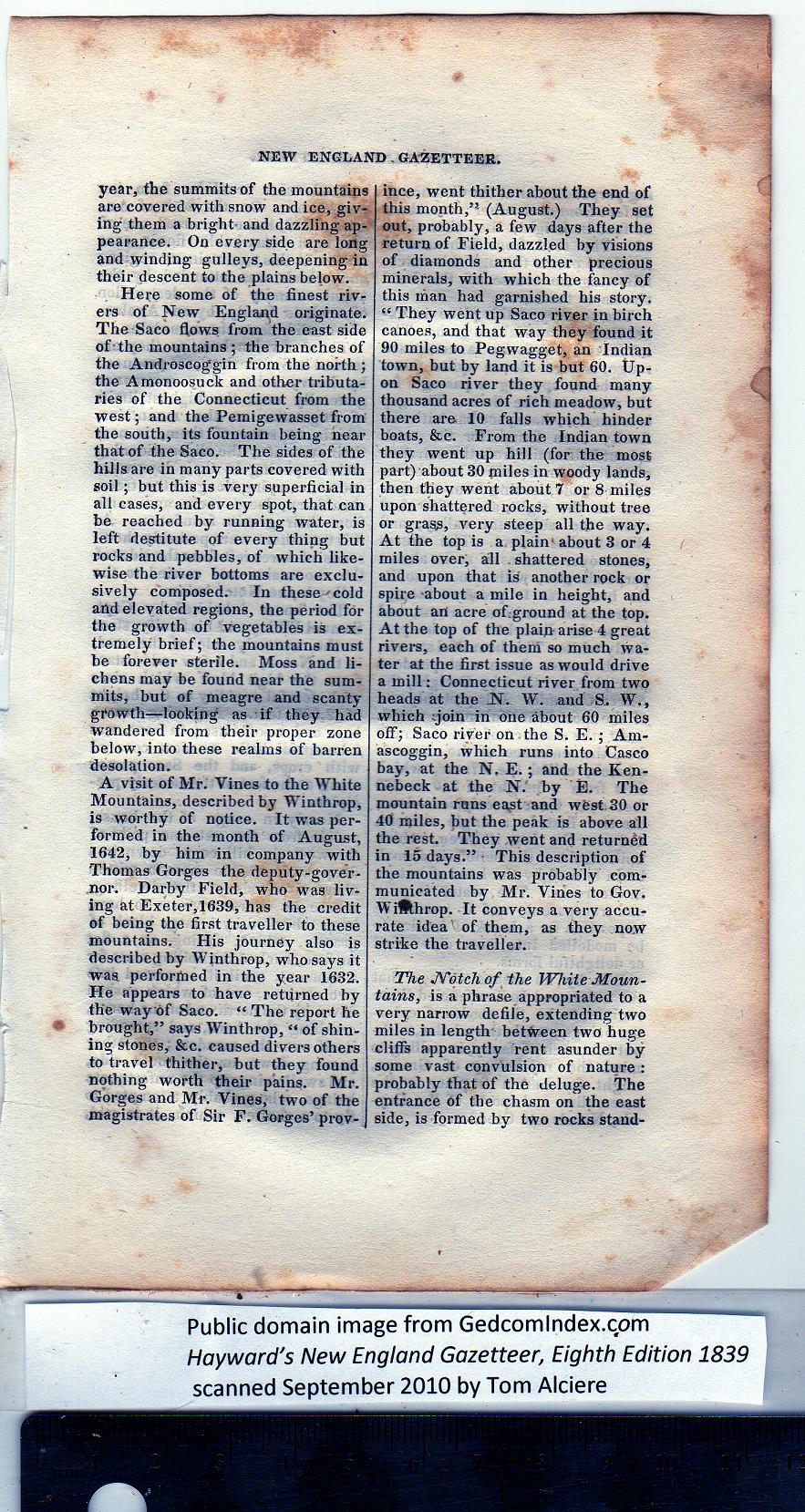|
year, the summits of the mountains
are covered with snow and ice, giv-
ing them a bright- and dazzling ap-
pearance. On every side are long
and winding gulleys, deepening in
their descent to the plains below.
Here some of the finest riv-
ers of New England originate.
The Saco flows from the east side
of -the mountains ; the branches of
the Androscoggin from the north ;
the Amonoosuck and other tributa-
ries of the Connecticut from the
west; and the Pemigewasset from
the south, its fountain being near
that of the Saco. The sides of the
hills are in many parts covered with
soil; but this is very superficial in
all cases, and every spot, that can
he reached by running water, is
left destitute of every thing but
rocks and pebbles, of which like-
wise the river bottoms are exclu-
sively composed. In these cold
and elevated regions, the period for
the growth of vegetables is ex-
tremely brief; the mountains must
be forever sterile. Moss and li-
chens may be found near the sum-
mits, but of meagre and scanty
growth—looking as if they had
wandered from their proper zone
below, into these realms of barren
desolation. |
A visit of Mr. Vines to the White
Mountains, described by Winthrop,
is worthy of notice. It was per-
formed in the month of August,
1642, by him in company with
Thomas Gorges the deputy-gover-
nor. Darby Field, who was liv-
ing at Exeter,1639, has the credit
of being the first traveller to these
mountains. His journey also is
described by Winthrop, who says it
was performed in the year 1632.
He appears to have returned by
the way of Saco. “ The report he
brought,” says Winthrop, “ of shin-
ing stones, &c. caused divers others
to travel thither, but they found
nothing worth their pains. Mr.
Gorges and Mr. Vine9, two of the
magistrates of Sir F. Gorges’ prov-
ince, went thither about the end of
this month,”- (August.) They set
out, probably, a few days after the
return of Field, dazzled by visions
of diamonds and other precious
minerals, with which the fancy of
this man had garnished his story.
“ They went up Saco river in bireh
canoes, and that way they found it
90 miles to Pegwagget, an Indian
town, but by land it is but 60. Up-
on Saco river they found many
thousand acres of rich meadow, but
there are 10 falls which hinder
boats, &c. From the Indian town
they went up hill (for the most
part) about 30 miles in woody lands,
then they went about 7 or 8 miles
upon shattered rocks, without tree
or grass, very steep all the way.
At the top is a plain' about 3 or 4
miles over, all shattered stones,
and upon that is another rock or
spire about a mile in height, and
about an acre of.ground at the top.
At the top of the plain arise 4 great
rivers, each of them so much wa-
ter at the first issue as would drive
a mill: Connecticut river from two
heads at the .N. W. and S.. W.,
which ;join in one about 60 miles
off; Saco river on the S. E. ; Am-
ascoggin, which runs into Casco
bay, at the N. E.; and the Ken-
nebeck at the N. by E. The
mountain runs east and west 30 or
40 miles, but the peak is above all
the rest. They went and returned
in 15 days.” This description of
the mountains was probably com-
municated by Mr. Vines to Gov.
Wifthrop. It conveys a very accu-
rate idea of them, as they now
strike the traveller.
The JVotchof the White Moun-
tains, is a phrase appropriated to a
very narrow defile, extending two
miles in length between two huge
cliffs apparently rent asunder by
some vast convulsion of nature :
probably that of the deluge. The
entrance of the chasm on the east
side, is formed by two rocks stand- |
